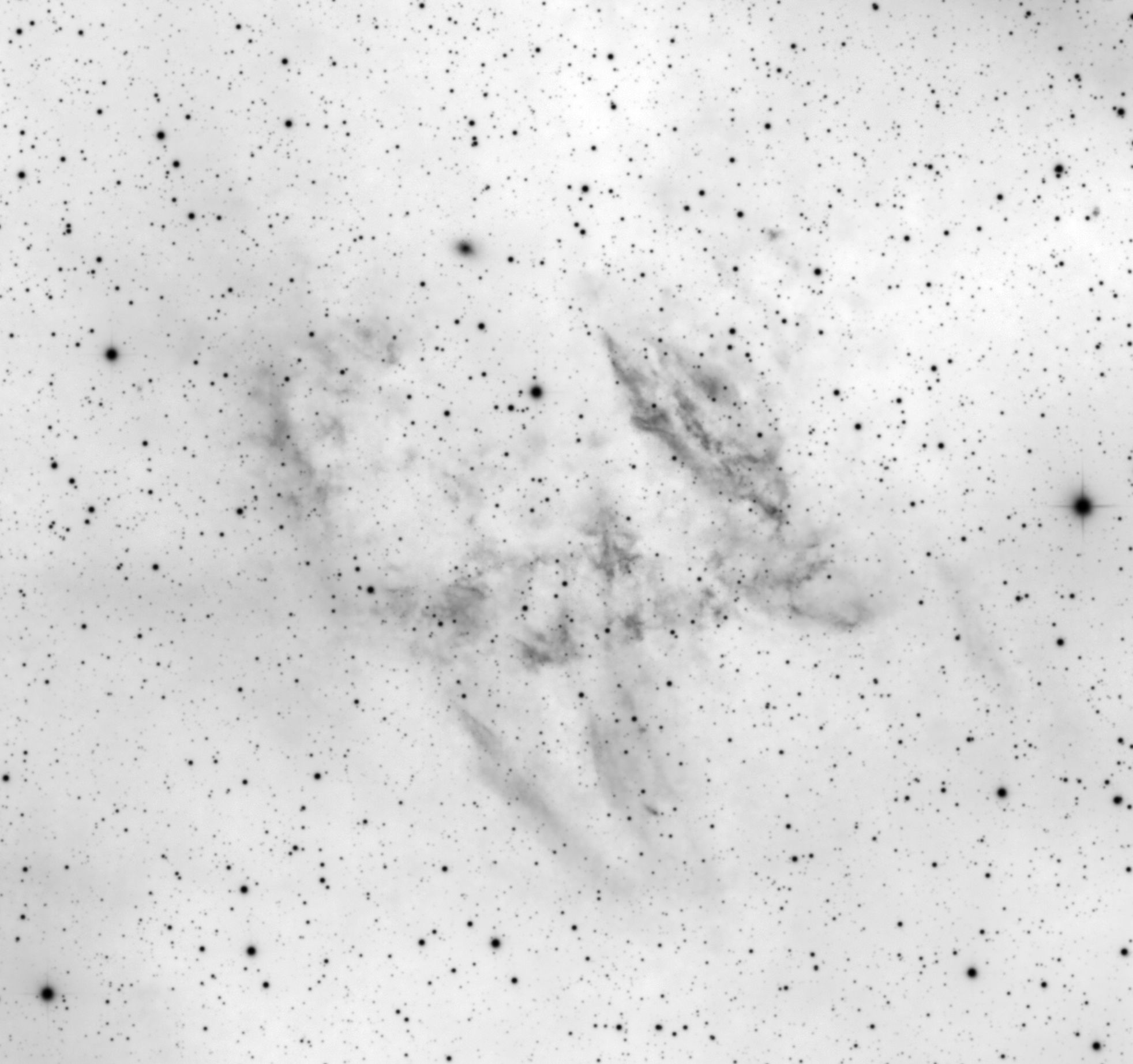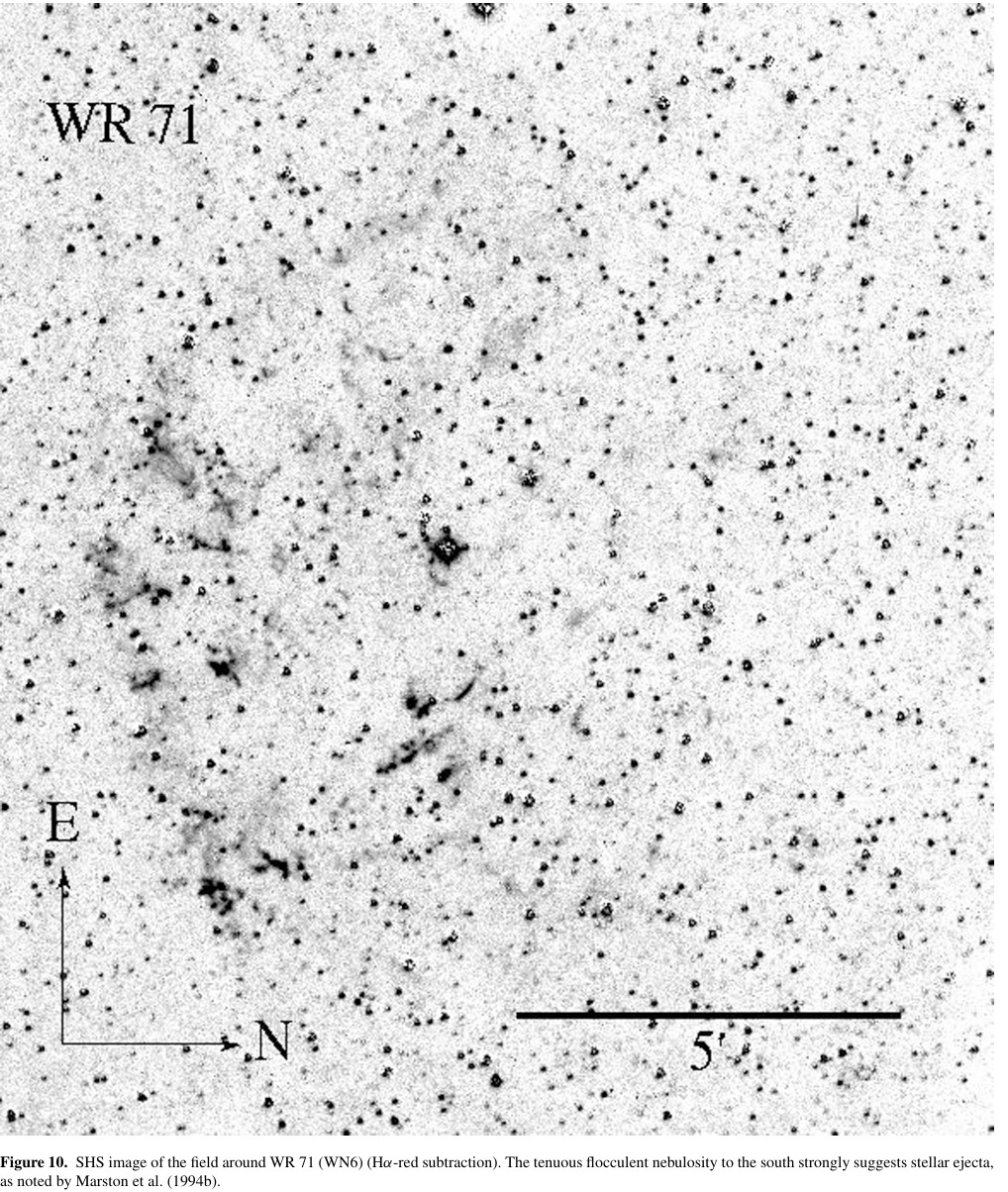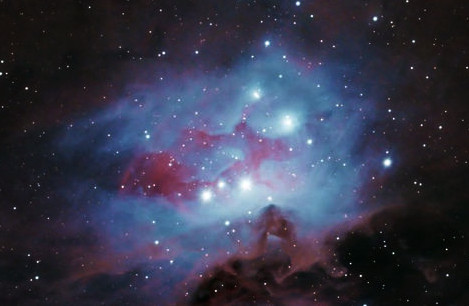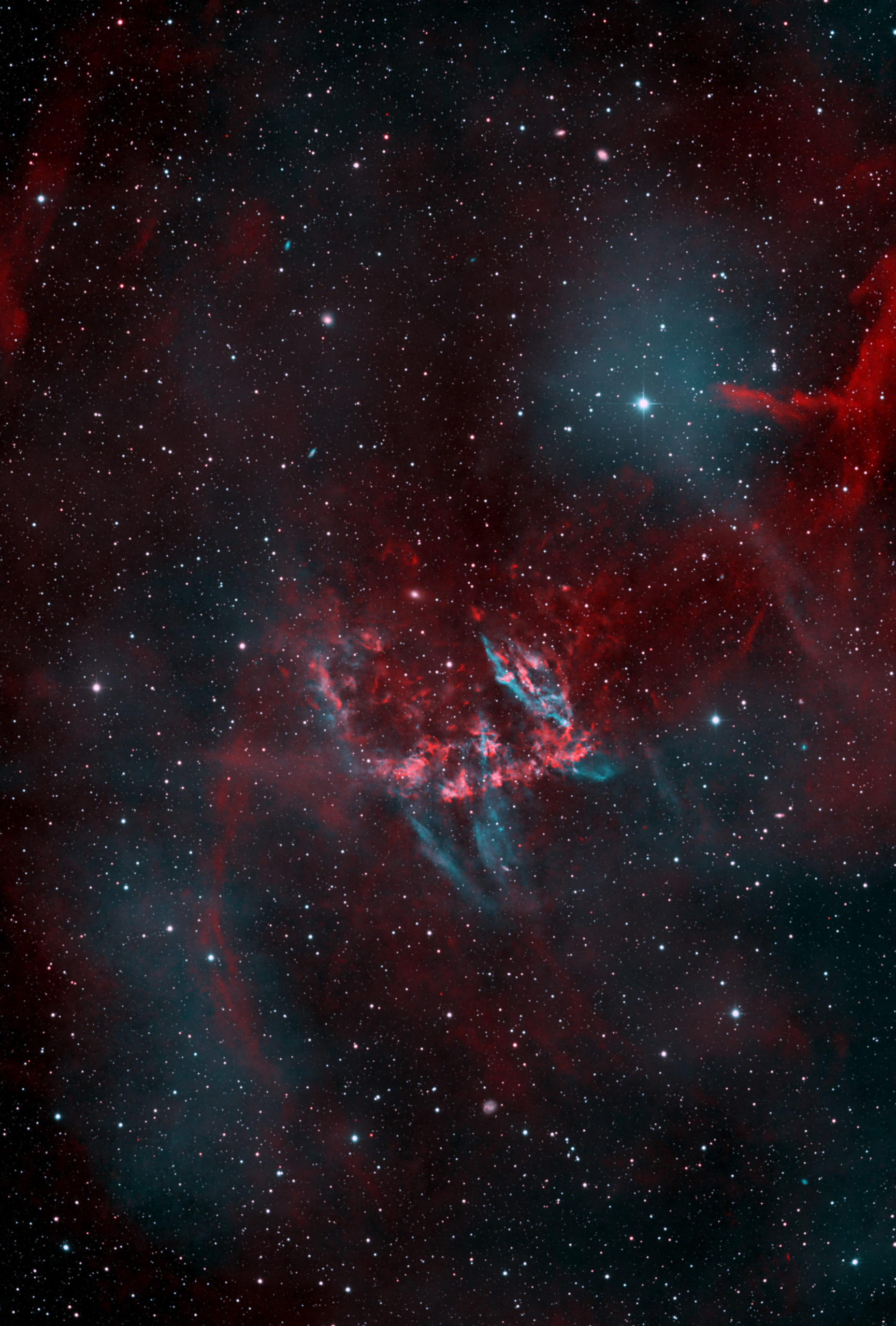WR 71
Constellation: Triangulum Australe
WR 71 (HD 143414) is a Wolf-Rayet star in the constellation of Triangulum Australe. North of WR 71, we can also see 5 galaxies (left to right: 2MASX J16043918-6227118, 2MASX J16043088-6234197, 2MASX J16042704-6229477, Unkown to SIMBAD, 2MASX J16030576-6223572). Also visible in this image is the galaxy LEDA 337704, located south of WR 71. Link to interactive sky chart.
Related scientific publication (Accepted for publication in the AJ):
The Ejecta Nebula Around the Wolf-Rayet Star WR 71
Robert A. Fesen, Manuel C. Peitsch, Martin R. Pugh, Bray Falls and Marcel Drechsler
We present deep Hα and [O III] images of the ejecta rich nebulosity associated with the suspected runaway and binary Wolf-Rayet star WR~71 (HD 143414). In Hα emission, the nebula appears as a crescent shaped, broken ring of clumpy emission some in angular size centered to the south and west of the WR star. At a Gaia estimated distance of 4.27 kpc, the nebula has physical dimensions of 11×16 pc making it one of the larger known ejecta rich WR ring nebulae. Our [O III] image also show considerable surrounding faint nebulosity much of which may be unrelated to the WR star. A comparison of the nebula’s optical appearance with that seen in WISE 22µm data shows infrared coincidence with the nebula’s brightest [O III] emission features. Deep Hα and [O III] images like those presented here suggests that new and substantially deeper imaging reconnaissance of WR star nebulae compared to earlier surveys may lead to additional WR ring nebula detections, thereby enhancing our understanding on the frequency and formation of WR ring nebulae. (Link)

H-alpha

[Oiii]
Hα and [O III] images of the WR 71 nebula showing a comparison of the nebula’s relative brightness in these line emissions. North is up, east to the left.
Dates:
This is derived from the outstanding data taken by Martin Pugh during March and April 2025 (Martin’s website: Remote Astrophotography with Martin Pugh (martinpughastrophotography.space).
His telescope is located in Chile (Observatory: El Sauce).
Colour palette is HOO.
This target was suggested by Robert A Fesen with the aim to obtain a deeper optical image of the Ha ejecta nebula around WR 71, and identify a potential Oiii signal. This nebula was initially identified by DJ Stock and MJ Barlow using the SHS Hα survey as described in Mon. Not. R. Astron. Soc. 409, 1429–1440 (2010). Figure 16 of this article is shown below.

Telescope & Mount:
Planewave CDK24 with 0.66x reducer (F/4.37) on a Planewave L600 mount.
Imaging:
Camera: Moravian C1-61000 (bin 2×2)
Data:
Nebula:
Astrodon Ha: 59x600s
Astrodon O3: 57x600s
Stars:
Astrodon R: 14x180s
Astrodon G: 14x180s
Astrodon B: 14x180s
Total integration time: 21h 26′

